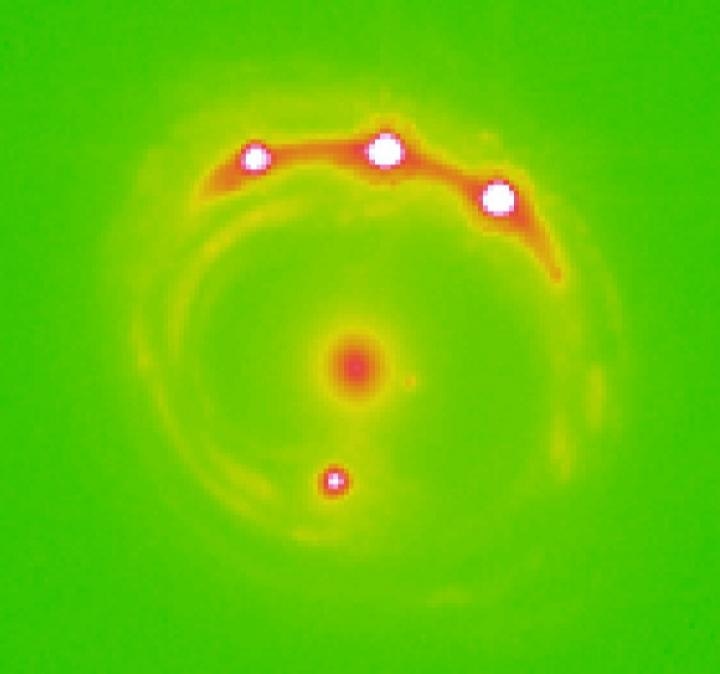Feb 5 2018
An astrophysics team from the University of Oklahoma recently discovered a population of planets beyond the Milky Way galaxy. Using microlensing - an astronomical phenomenon and the only known method that can discover planets at great distances from the Earth - OU researchers succeeded in detecting objects in extragalactic galaxies that range from the mass of the Moon to the mass of Jupiter.
 Image of the gravitational lens RX J1131-1231 galaxy, with the lens galaxy at the center and four lensed background quasars. It is estimated that there are trillions of planets in the center elliptical galaxy in this image. (Image credit: University of Oklahoma)
Image of the gravitational lens RX J1131-1231 galaxy, with the lens galaxy at the center and four lensed background quasars. It is estimated that there are trillions of planets in the center elliptical galaxy in this image. (Image credit: University of Oklahoma)
Xinyu Dai, Professor in the Homer L. Dodge Department of Physics and Astronomy, OU College of Arts and Sciences, along with OU postdoctoral researcher Eduardo Guerras, brought about this discovery with data obtained from the National Aeronautics and Space Administration’s Chandra X-ray Observatory, a telescope in space that is monitored by the Smithsonian Astrophysical Observatory.
We are very excited about this discovery. This is the first time anyone has discovered planets outside our galaxy. These small planets are the best candidate for the signature we observed in this study using the microlensing technique. We analyzed the high frequency of the signature by modeling the data to determine the mass.
Xinyu Dai
While planets are frequently discovered within the Milky Way with the help of microlensing, the gravitational effect of even tiny objects can develop high magnification leading to a signature that can be modeled and then explained in extragalactic galaxies. Until this research, there has been no proof of planets in other galaxies.
This is an example of how powerful the techniques of analysis of extragalactic microlensing can be. This galaxy is located 3.8 billion light years away, and there is not the slightest chance of observing these planets directly, not even with the best telescope one can imagine in a science fiction scenario. However, we are able to study them, unveil their presence and even have an idea of their masses. This is very cool science.
Eduardo Guerras
For this research, OU researchers made use of the NASA Chandra X-ray Observatory at the Smithsonian Astrophysical Observatory. Calculation of the microlensing models took place at the OU Supercomputing Center for Education and Research.
A paper, “Probing Planets in Extragalactic Galaxies Using Quasar Microlensing” by Dai and Guerras on this study has been featured in the Astrophysical Journal Letters.